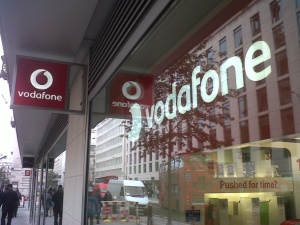Vodafone to use femtocells to boost rural 3G

Vodafone plans to use femtocell technology to boost 3G mobile reception in rural areas and is looking for a dozen towns to take part in trials.

Vodafone will put femtocells on BT phone poles in a bid to boost 3G reception in rural areas, starting with 12 towns. Photo credit: Jon Yeomans
The trials, announced on Tuesday, will begin "early in 2012" once the 12 communities have been identified, the mobile operator said. The femtocells will be placed on BT Openreach's telephone poles, in a break from previous Vodafone pilots for the technology.
"Mobile connectivity plays a vital role in keeping communities in touch and helping to support rural economies," Vodafone said in a statement. "The economics of getting mobile coverage into rural areas by traditional methods, however, can mean that some communities have less opportunity than others to take part in the growing smartphone revolution."
The company will use 'open' femtocells, essentially small low-power 3G mobile phone base stations, to boost signal in the rural areas. They will be placed on BT's telephone poles, and this approach will cost "a fraction of the price" of using the modules that normally sit on mobile phone masts, a Vodafone spokesman told ZDNet UK.
Vodafone has offered Sure Signal femtocell units for customers to boost in-home reception since 2009. Unlike those units, the open femtocells do not require pre-registration of the phone numbers that will use them. In addition, each of the open femtocells can support up to four calls at a time, according to the operator.
Berkshire trial
The company has already been conducting trials using open femtocells placed in a local pub, village hall and the roof of a telephone box in the village of East Garston, West Berkshire. While those units have a range of around 100m, the new versions for testing next year will have "a considerably wider radius", but still less than the 20km or so provided by a mobile phone mast, the Vodafone spokesman said.
Mobile backhaul for the scheme will be provided by BT's network, the same method used in East Garston. However, Vodafone is also looking at alternative infrastructure for the new trials.
"We will also look to experiment with other technologies, such as microwave, and contact Broadband Delivery UK (BDUK) to see whether the networks it is helping create could be used to get coverage into areas where there is currently no broadband service at all," the operator's spokesman said.
The BDUK scheme provides government cash to regional councils to invest in building infrastructure in areas where there is a lack of service. On Monday, Ofcom released maps of mobile phone coverage in the UK showing rural areas fare far worse than densely populated towns and cities for 3G coverage.
The report found 30 percent of the UK has no 3G coverage at all from any operator, when measured by geographic area. However, 73 percent of the country receives 3G coverage from all major operators when measured by premises.
Get the latest technology news and analysis, blogs and reviewsdelivered directly to your inbox with ="http:>ZDNet UK'snewsletters.